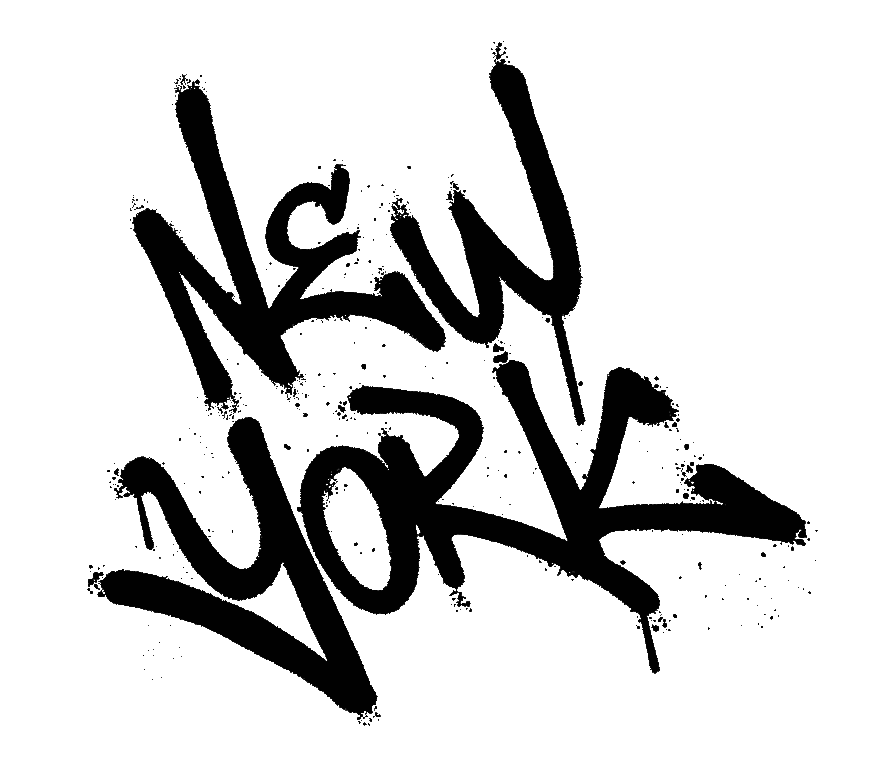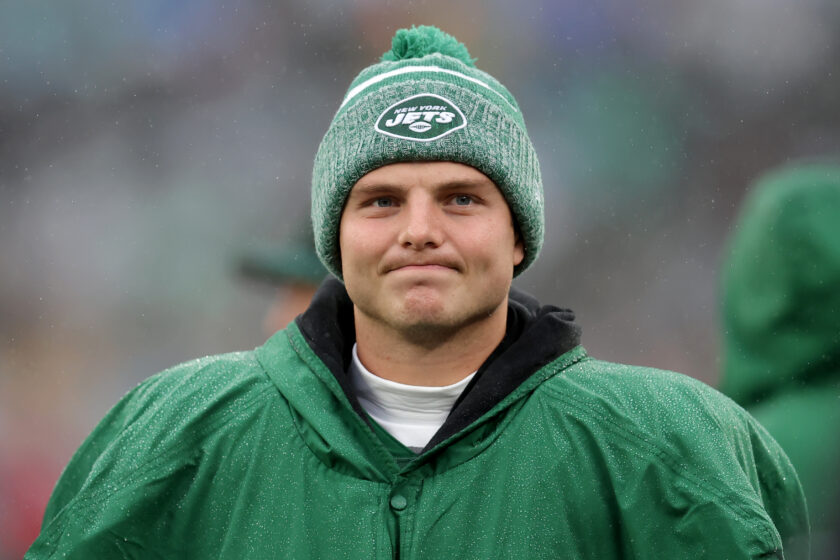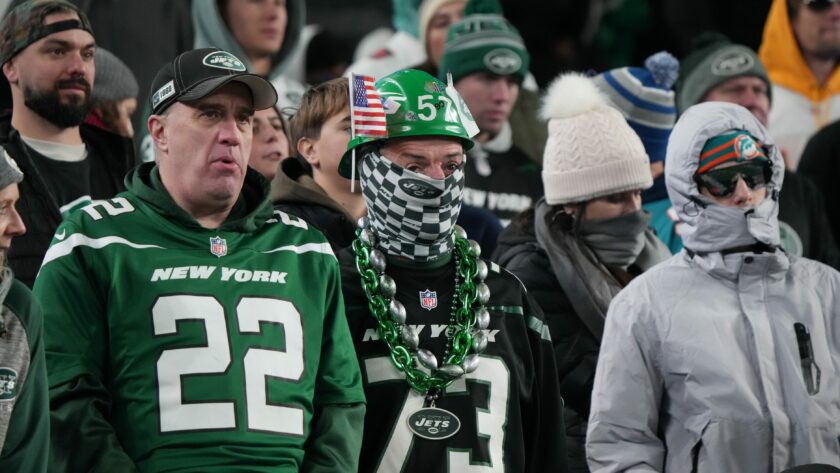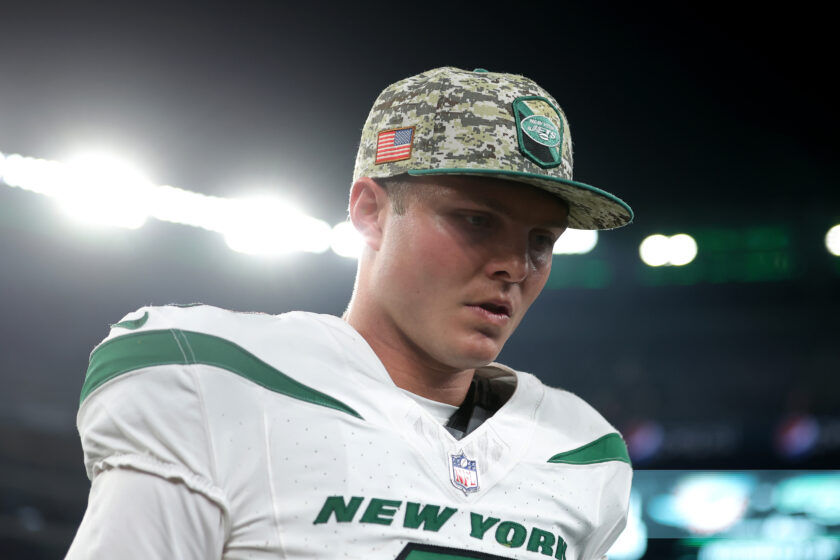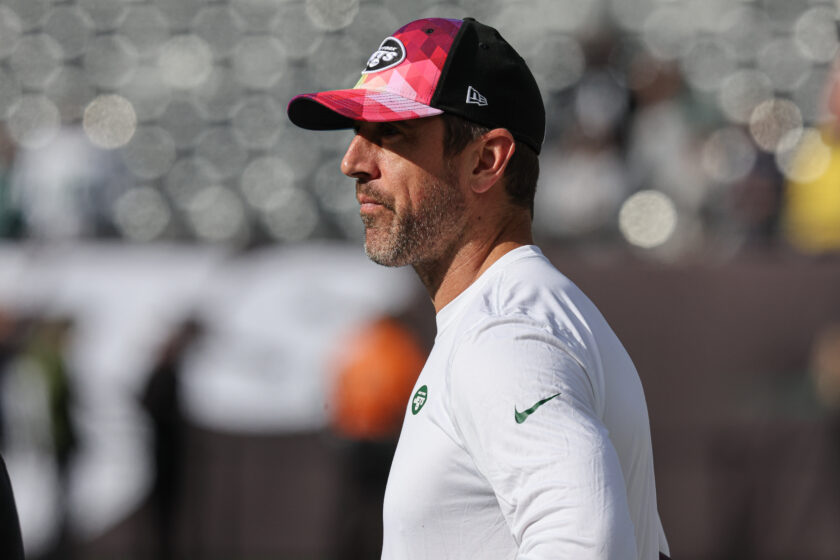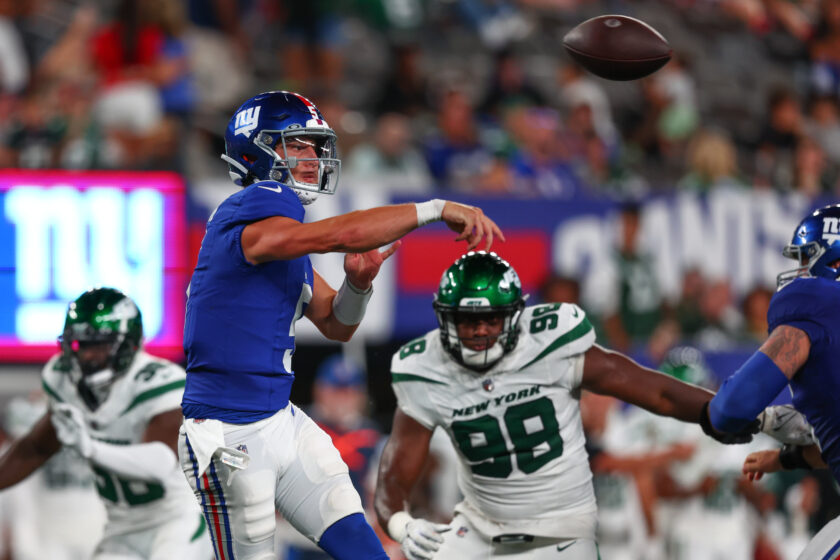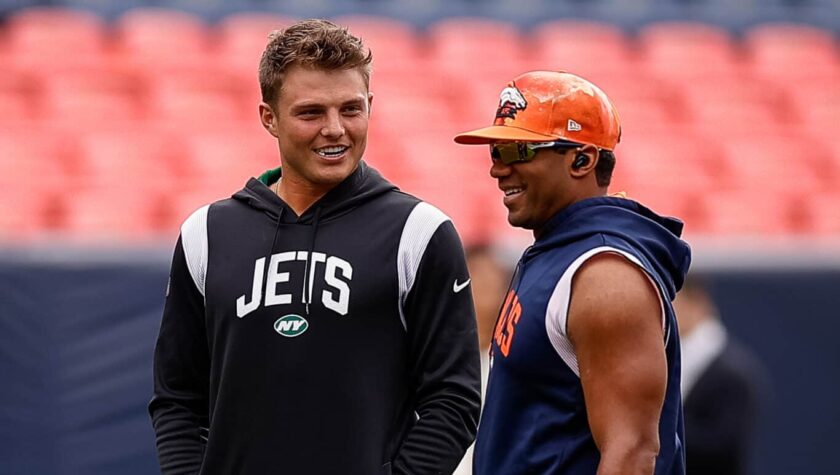New York Jets 2020 draft: Anything other than OL at No. 11 is a mistake
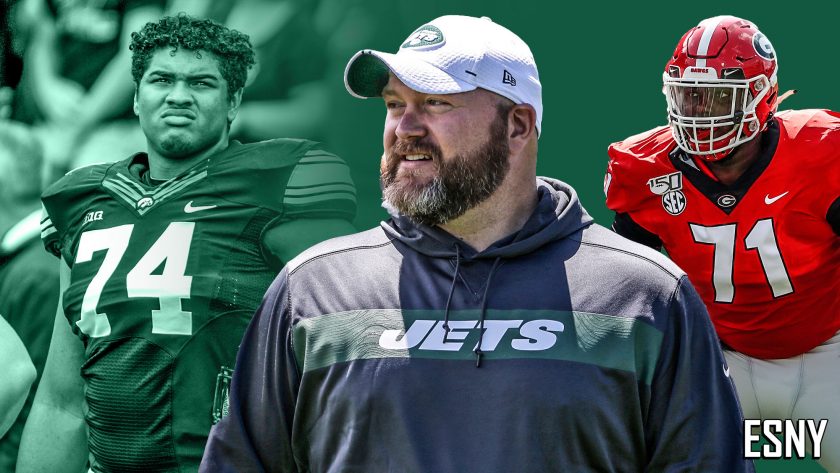
Anything other than an offensive lineman for the New York Jets at No. 11 in the 2020 NFL Draft would be a grave mistake.
[sc name=”robby-sabo-banner” ]Stop it, please. Just… no. For the love of all things football realistic, please stop discussing wide receiver for the New York Jets in the No. 11 hole.
Selecting a wideout in the first round of the 2020 NFL Draft is neither realistic nor appropriate for Joe Douglas’s team. An edge rusher is much more acceptable. In fact, it’s arguably the correct way to go due to the idea John Abraham was the organization’s last legit outside pass rusher.
But in the end, It doesn’t matter. Enough is enough. The issue must finally be forced.
Based on the Mike Maccagnan era and Douglas’s words upon assuming the general manager post, it’s offensive line or bust in this spot, and correctly so.
From ESNY, the same people who told you signing Le’Veon Bell was a mistake a year ago, who promised that a Quinnen Williams selection over Josh Allen would present familiar problems, who claimed Kirk Cousins was not the right path and who desperately pleaded with Maccagnan to fix the offensive line in 2016, this time around remains on a familiar topic: the offensive line.
For the Jets, though, this offseason is anything but familiar.
“Best available player” means very little due to circumstances. The situation is so dire upfront nothing else can be accepted.

And Douglas knows it extremely well.
Pro Football Focus was kind to the Jets big-heavy group. Ranking them 28th overall is almost incredible in its own right. According to PFF’s own statistics, they finished with the second-worst pressure attempt in 2.5 seconds or less and averaged just 0.7 yards before contact per rush attempt. Both indicate a league-worst ranking.
Football Outsiders, once again, presents a much clearer overall output. Only the Miami Dolphins finished with a worst “adjusted line yards” mark than the Jets’ 3.80. (In 2018, the Jets O-line was dead last.) They allowed the fifth-most sacks in the league and finished, once again, second in “adjusted sack rate,” with a 9.8 percent mark (again, only beating Miami).
In 2017, the Jets finished 29th in adjusted line yards and 26th in adjusted sack rate.
Blame Adam Gase all you want; this has been an issue since the glory days of Nick Mangold and D’Brickashaw Ferguson’s prime. (And what a coincidence: the last great Jets roster was spurred on thanks to the selections of those two all-time OL greats.)
We asked Maccagnan to fix the offensive line as far back as December 2016. Only three offensive line selections over five drafts (no first or second-rounders) later, and the same beat predictably marches forward: this offense stinks.
It’s not rocket science, folks. Deep dives into analytics aren’t required. The offensive line in football represents nearly half of the entire offense (5-of-11 players). A quick glance at the depth chart and drafting habits of the playoff teams—on a year-by-year basis—paints an easy picture to dissect.
It always starts upfront and no offense (no young quarterback) can get it going until those five big heavies upfront can at least perform near an average level.
A similar scenario presents itself every offseason. One veteran name is acquired to appease the situation (Kelechi Osemele, Spencer Long, Ryan Clady, etc.), and positioning in the draft rationalizes the situation. How could the Jets select an offensive lineman at No. 3? How is it possible to do such a thing when mock drafts don’t feature the next big heavy until several picks later?
[sc name=”jets-gm-joe-t-shirt” ]It’s a sad mistake general managers in this league make every offseason. Marrying the big board (heavily influenced by mock drafts) destroys depth chart balance.
Not this time. Not with Joe Douglas.
The Turk, as he was known while with the Baltimore Ravens early this century, is a former offensive lineman himself. He understands the importance of having that unit ready to roll. In fact, he uttered the words every Jets fan wanted to hear upon his arrival—the very same words that weren’t uttered once in the entire Maccagnan era.
“It starts with the quarterback and both lines,” Douglas proclaimed.
Football is an inside-out game. It always has been and always will be, despite drastic rule changes. A dominant offensive line and four-man conventional pass rush greatly impact the rest of the roster to a degree that an outside-in strategy could never dare imagine.
Luckily, there’s plenty of offensive linemen projected to go around the No. 11 spot.
- Mecki Becton, T, Louisville
- Jedrick Willis, T, Alabama
- Tristan Wirfs, G, Iowa
- Andrew Thomas, T, Georgia
All four of these hogs are projected to go either in the top 10 or somewhere just outside. Many mock drafts have the Jets selecting one of the four or taking K’Lavon Chaisson, an edge player from LSU, via Daniel Jerimiah of NFL.com.
That scenario simply cannot happen. The next offensive lineman off Jeremiah’s board is Austin Jackson (LSU) in the 26th hole. While edge at No. 11 isn’t an unforgivable sin, Douglas knows it has to be offensive line. He cannot wait until the second round, especially with young Sam Darnold coming off another brutally physical season, coupled with a bout of mono.

Instead of edge, a trade-down scenario has to be in Douglas’s back pocket in the event all four primetime offensive linemen are gone prior to 11. And as far as a wide receiver or cornerback is concerned… forget about it (in a deep New York voice). Such a sin is reserved for Maccagnan drafts, only (i.e. Quinnen Williams with Josh Allen on the board).
Football isn’t complicated. “Best available player” is as close to a myth as anything in this great game can project. If such a notion were true, Derwin James would have been a top-five pick instead of a mid-first-rounder. Joe Montana and Tom Brady are first off the board.
Greater than “best available player” is the idea of unit completion and creating the greatest ceiling for every one of the 53 players on the depth chart. As crazy as the following statement sounds, it’s true: Jamal Adams’s first three seasons in the league have been severely handicapped due to one of the league’s worst four-man conventional pass rushes.
As great as Adams is, however, is how dire Darnold’s situation remains. The Jets kid QB has always played under severe handicap scenarios for two seasons. Always running for his life and seeing ghosts doesn’t all fall on those around him, but actual development doesn’t truly begin until the offensive line is set. Or, at the very least, league-average.
Don’t you dare mention wide receiver at No. 11. An edge rusher could be an outside possibility. But offensive line, this time around, thanks to the sins that came before him, must be Joe Douglas’s only option for his New York Jets.
And, thankfully, for fans, he knows it as well as anybody in the game.
Robby Sabo is a co-founder, CEO and credentialed New York Jets content creator for Jets X-Factor - Jet X, which includes Sabo's Sessions (in-depth film breakdowns) and Sabo with the Jets. Host: Underdog Jets Podcast with Wayne Chrebet and Sabo Radio. Member: Pro Football Writers of America. Coach: Port Jervis (NY) High School. Washed up strong safety and 400M runner. SEO: XL Media. Founder: Elite Sports NY - ESNY (Sold in 2020). SEO: XL Media.
Email: robby.sabo[at]jetsxfactor.com
